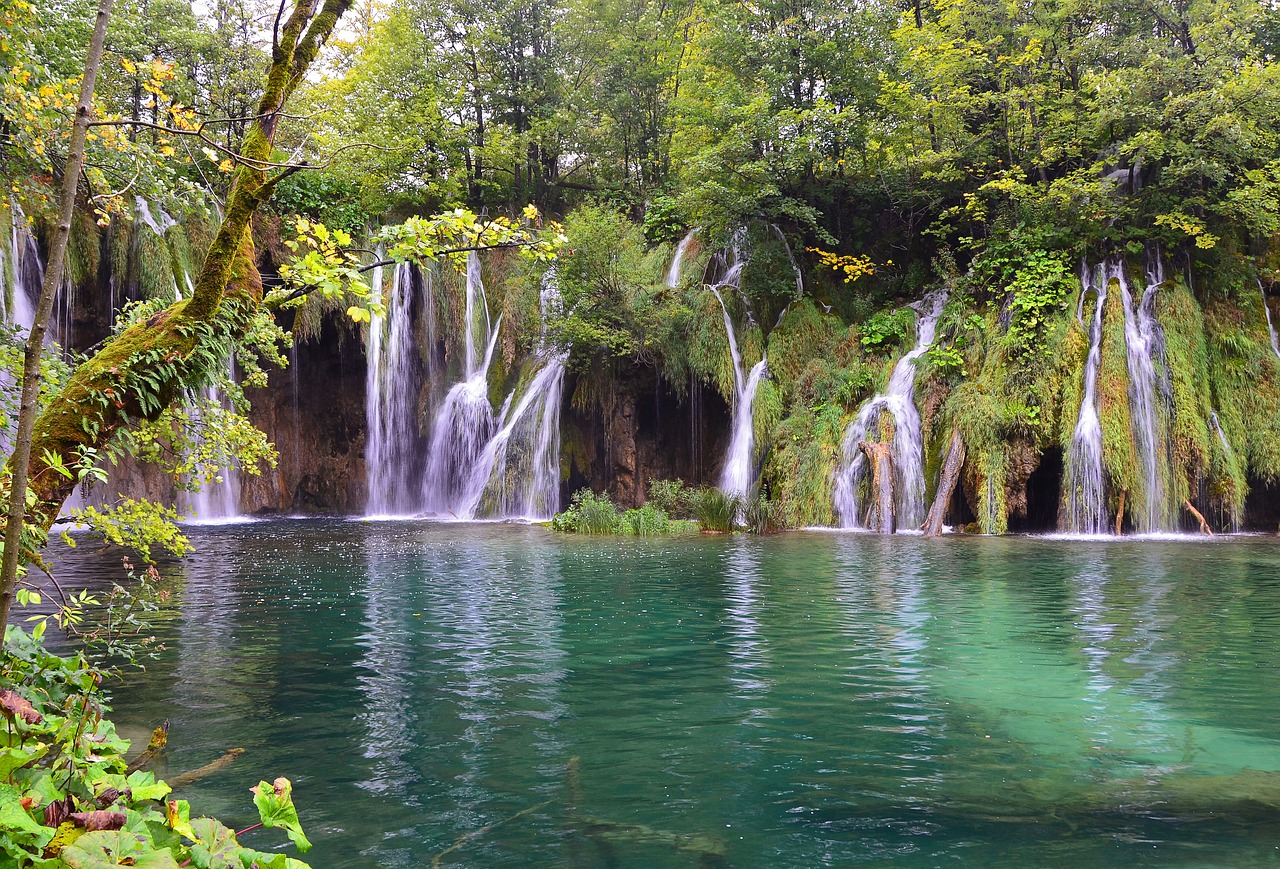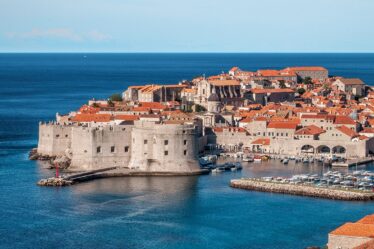
Plitvice Lakes National Park, located in central Croatia, is one of the most stunning natural landscapes in Europe. Known for its cascading lakes, lush forests, and rich biodiversity, this UNESCO World Heritage site attracts millions of visitors each year. This detailed guide provides everything you need to know about visiting Plitvice Lakes National Park, including its geological wonders, visitor information, hiking trails, and nearby attractions.
History and Geological Formation
Origins of Plitvice Lakes
Plitvice Lakes National Park was established in 1949, making it Croatia’s oldest national park. The park is renowned for its 16 terraced lakes, interconnected by a series of waterfalls and cascades, formed through the deposition of travertine, a type of limestone. Over thousands of years, water rich in calcium carbonate deposited minerals, creating natural dams that now separate the lakes.
UNESCO World Heritage Site
In 1979, Plitvice Lakes National Park was designated a UNESCO World Heritage site, recognized for its outstanding natural beauty and unique geological and ecological features. The park’s preservation efforts have helped maintain its pristine environment and biodiversity.
Visitor Information
Getting There
Plitvice Lakes National Park is easily accessible by car and public transportation:
- By Car: The park is located about 130 km (80 miles) from Zagreb, Croatia’s capital, and about 230 km (140 miles) from Split. Both routes offer scenic drives through the Croatian countryside.
- By Bus: Several bus companies operate regular routes from major cities such as Zagreb, Zadar, and Split to the park’s entrances.
Park Entrances
The park has two main entrances, Entrance 1 (North Entrance) and Entrance 2 (South Entrance), each offering access to different parts of the park:
- Entrance 1 (North Entrance): Ideal for exploring the Lower Lakes and the Great Waterfall.
- Entrance 2 (South Entrance): Convenient for visiting the Upper Lakes and is often less crowded.
Opening Hours and Tickets
- Opening Hours: The park is open year-round, with varying hours depending on the season. Summer hours are typically from 7:00 AM to 8:00 PM, while winter hours are shorter.
- Tickets: Tickets can be purchased online or at the entrance. Prices vary by season, with peak season (June to September) tickets being more expensive. It’s recommended to buy tickets in advance during the high season to avoid long lines.
Exploring the Park
The Lakes and Waterfalls
Plitvice Lakes are divided into the Upper Lakes (Gornja jezera) and Lower Lakes (Donja jezera):
- Upper Lakes: Consist of 12 lakes, characterized by larger and more serene bodies of water, surrounded by dense forests. Highlights include Prošćansko Lake and the beautiful Kozjak Lake.
- Lower Lakes: Comprised of four smaller lakes, the Lower Lakes feature more dramatic waterfalls and rugged canyon landscapes. The Great Waterfall (Veliki slap), Croatia’s tallest waterfall, is a must-see.
Hiking Trails
The park offers several well-marked hiking trails, ranging from easy walks to more challenging hikes:
- Trail A: A short, 2-3 hour route starting from Entrance 1, focusing on the Lower Lakes and the Great Waterfall.
- Trail B: A medium-length, 3-4 hour trail also starting from Entrance 1, covering the Lower Lakes and extending to Kozjak Lake.
- Trail C: A comprehensive, 4-6 hour route from Entrance 1, exploring both the Lower and Upper Lakes.
- Trail H: Starting from Entrance 2, this 4-6 hour trail covers the Upper Lakes and descends to the Lower Lakes, offering a full park experience.
- Trail K: The longest route, taking 6-8 hours, Trail K covers the entire park from either entrance, ideal for avid hikers wanting to see everything.
Boat Rides and Scenic Trains
- Electric Boats: Electric boats operate on Kozjak Lake, providing a peaceful and scenic way to travel between the Upper and Lower Lakes.
- Scenic Trains: Eco-friendly trains run between Entrance 1 and Entrance 2, offering an easy way to navigate the park and enjoy panoramic views.
Flora and Fauna
Rich Biodiversity
Plitvice Lakes National Park is home to a diverse array of plant and animal species, thanks to its varied habitats, including forests, meadows, and aquatic environments:
- Flora: The park boasts over 1,200 plant species, including several endemic and rare species. The forests are predominantly composed of beech, fir, and spruce trees.
- Fauna: The park is inhabited by numerous animal species, including deer, bears, wolves, and various bird species. The lakes themselves are teeming with fish, amphibians, and insects.
Photography Tips
Capturing the Beauty of Plitvice Lakes
The park’s stunning landscapes offer endless opportunities for photography:
- Golden Hours: Early morning and late afternoon provide the best light for capturing the lakes and waterfalls.
- Tripod: A tripod is essential for long exposure shots of waterfalls to create a silky water effect.
- Filters: Use polarizing filters to reduce glare and enhance the colors of the water and foliage.
- Weather Conditions: Different weather conditions offer unique photographic opportunities. Misty mornings and overcast days can add a mystical quality to the scenery.
Nearby Attractions
Rastoke
Located about 30 km (19 miles) from Plitvice Lakes, Rastoke is a charming village known for its picturesque waterfalls and traditional wooden houses. Often referred to as “the Small Lakes of Plitvice,” it’s an ideal stop for those traveling to or from the national park.
Barac Caves
The Barac Caves, situated near the town of Rakovica, offer a fascinating underground adventure. Guided tours take visitors through the cave system, showcasing stunning stalactites, stalagmites, and other unique rock formations.
Zagreb
Croatia’s capital city, Zagreb, is a vibrant destination with a rich history and cultural heritage. Visitors can explore its medieval old town, bustling markets, and numerous museums and galleries.
Practical Tips for Visitors
What to Bring
- Comfortable Shoes: Wear sturdy, comfortable shoes suitable for walking on uneven terrain.
- Water and Snacks: Carry water and snacks, especially if you plan on hiking for several hours.
- Weather-Appropriate Clothing: Dress in layers and bring a rain jacket, as weather can change quickly.
- Cash: Some facilities within the park may only accept cash, so it’s good to have some on hand.
Safety Considerations
- Stay on Marked Trails: To protect the environment and ensure your safety, always stay on marked trails.
- Weather Awareness: Check the weather forecast before your visit and be prepared for sudden changes in weather conditions.
- Respect Wildlife: Keep a safe distance from wildlife and do not feed any animals.
Conclusion
Plitvice Lakes National Park is a natural gem that offers a unique blend of stunning landscapes, rich biodiversity, and tranquil beauty. Whether you’re a nature lover, a photography enthusiast, or simply seeking a peaceful retreat, Plitvice Lakes promises an unforgettable experience. Plan your visit carefully, respect the environment, and immerse yourself in the breathtaking beauty of one of Croatia’s most treasured natural wonders.
